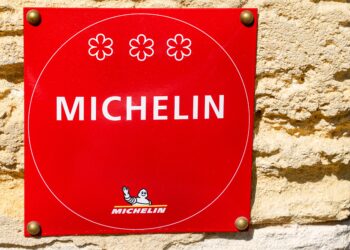Are the Greek islands as beautiful in real life as they appear in photos? Is the food as delicious and nutritious in person?
Fortunately, the answer to both is yes.
On the island of Milos, my companion and I dined at an out-of-the-way café called Nostos Sea Food, one of many eateries along the island’s waterfront. It was a real local joint, and when our food arrived, it was obvious as to why the place was so popular. Dolmades, stuffed grape leaves typically served in rolls, had been transformed into tasty, shrimp-filled bites covered in lemon foam.
Galatopita, a classic ruffled milk pie, was a highly attractive feast of buttery phyllo and custard, beautifully adorned with pistachios. Despite what looked like a very small kitchen from our vantage point, the chef had managed to create an experience worthy of a four-star restaurant.
In Greek cuisine, pretty much every meal is prepared with pride. Creamy, rich Greek yogurt topped with walnuts and honey looked and tasted more like a dessert than a classic breakfast.
On Santorini, we kept coming back to one restaurant that served traditional Greek cuisine. At 218 Degrees Cafe, a twist on spanakopita, the beloved Greek spinach pie, was like nothing I’d experienced elsewhere in the world. Zucchini fritters were packed with fresh vegetables and herbs, then fried in olive oil. They were served with another Greek staple: tzatziki, a yogurt-based dip full of cucumber, dill and lemon.
Traditional Greek salad, called horiatiki, was another pleasant surprise. For one, there was no lettuce, just lots of plump, juicy tomatoes, cucumbers, green peppers and onions, laced with several of the many varieties of Greek olives, and topped with large slabs of fresh feta and a touch of olive oil.
And the feta was very different to that served outside of Greece. The rich and creamy cheese simply melted in my mouth.
One of my favorite dishes was perhaps the simplest: perfectly roasted vegetables glistening with olive oil, sprinkled with seeds and herbs. The gorgeous surroundings of the Santorini coastline only enhanced the culinary experience.
Benefits of the Mediterranean lifestyle
Scientists think olive oil could be one of the reasons that meals from the Mediterranean are so healthy. Countless studies have found that eating the Mediterranean way can reduce the risk of diabetes, high cholesterol, dementia, memory loss, depression, and breast cancer and can lead to stronger bones, a healthier heart and longer life. While the Mediterranean way of eating is based on traditional foods from the 21 countries that surround the Mediterranean Sea, they share a common theme. The emphasis is on plant-based cooking, including fresh vegetables and fruits, whole grains, beans, seeds and nuts and a heavy emphasis on extra-virgin olive oil.
You’re unlikely to find refined sugar and flour in Greek food except on rare occasions. Fats other than olive oil, such as butter, are consumed infrequently. Red meat can make a rare appearance, but it’s generally only used to flavor a dish. While meals may include eggs, dairy and poultry, they come in much smaller portions than in the American diet.












